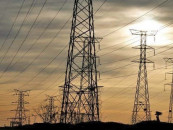PM’s Rs200b industrial package in doldrums
IMF objects to power rate cut for commercial users, wealth tax

The International Monetary Fund (IMF) has not only objected to Prime Minister Shehbaz Sharif’s Rs200 billion package aimed at reducing power tariff for industrial consumers by Rs10.69 per unit but also did not endorse the proposal of imposing wealth tax on all types of assets, including bank balances.
The sources said that in lieu of reducing tax burden of some sectors, the government proposed to slap 0.1% wealth tax on all assets, including bank balances and shares and 0.5% wealth tax on the assets declared in the wealth statements by taxpayers. However, the IMF has objected to slapping the wealth tax on the cash stashed in bank accounts, they added.
The sources said that after excluding the bank balances of the depositors, the revenue impact of the remaining assets is not very high, thus, the government may not introduce the wealth tax on Friday.
The government does not want to tax the pesticides, fertilizer and the erstwhile Federally-Administered Tribal Areas and it has to give the alternatives to the global lender in lieu of the sectors.
Similarly, the IMF once again sought more clarifications about the prime minister’s decision to cut the power rate for industries by Rs10.69 per unit under the Rs200 billion relief package, said the sources.
The global lender has seen the package as an attempt to give hidden subsidies to the industries on the one hand and putting an additional burden on the residential consumers on the other hand to finance the package, according to the government sources.
The Resident Representative of the IMF, Esther Perez, did not respond to a question whether the government took the IMF on board before announcing the package.
The government has set aside Rs120 billion in the budget to finance the package in the next fiscal year and plans to recover the remaining amount from residential, commercial and industrial consumers through fixed electricity charges.
The Power Division also did not respond to a request for comments.
At the weekend, the government shared more data with the IMF to explain its point in the hope to win the endorsement for the industrial package.
It is the second that the IMF has objected to reducing the electricity prices for the industries. Earlier, in February this year, the IMF’s Mission Chief to Pakistan, Nathan Porter, had said that the proposed industrial tariff reduction plan did not address the underlying problems and in particular, the circular debt neutrality of the tariff rationalisation plan was doubtful.
It seems neither the IMF nor the industrialists are happy about the package. The industrialists say that it would cause a heavy financial burden on big industries that have large electricity sanctioned loads and are now vulnerable.
The industrialists have started making hue and cry against the government’s decision to impose fixed electricity surcharges on industries that according to them would wipe out their business due to hefty increase in the cost of electricity.
The industrialists are of the view that the cost of the fixed charges was even higher than the Rs10.69 per unit cut in their bills that too once again has stuck up at the door of the IMF.
They said that the fixed charges of Rs2,000 per kW per month would translate into almost Rs9 per unit on a variable unit consumption basis for the industry operating at 50% production capacity. Previous fixed charges for industries ranged from Rs460 to Rs500 per kW per month.
Now, the industrial consumers will face increased fixed charges, with those using up to 25kW paying Rs1000, B2 category (consumers up to 500kW) paying Rs2000 per kw, and B3 and B4 category consumers of 5000kW and above also paying Rs2000.
They said that due weak economic conditions factories were not running even at half of their capacities. As a result, the factories may not be able to utilise even half of their sanctioned load, which will force them to pay fixed charges equal to half of their load capacity.
The government reduced the prices by ending the cross-subsidy which these industries were providing to finance the low-end residential consumers. The industrial consumer was paying Rs8.61 per unit subsidy and the residential consumer using more than 400 units was paying Rs5.88 per unit to subsidize the low-end residential consumers.
In February this year, the mission chief had said that the industrial tariff reduction plan “would place a significant additional burden on vulnerable households”
But the National Electric Power Regulatory Authority (NEPRA) has introduced fixed monthly charges for domestic, commercial and industrial consumers. Domestic consumers will now face fixed charges ranging from Rs200 to Rs1000 per month, depending on their monthly consumption.
Commercial consumers will see a significant increase in their fixed charges, with a 300% hike for those using less than 5kW and a 355% increase for those using 5kW or more.
The IMF has also hardened its stance on making the gas unviable for the in-house power plants of the industries and sought to increase the prices significantly. The global lender wants full cost recovery of the imported LNG by increasing current prices to Rs3600 per mmbtu. The other option for the government is to cut the gas supplies, which the government has refused.



















COMMENTS
Comments are moderated and generally will be posted if they are on-topic and not abusive.
For more information, please see our Comments FAQ